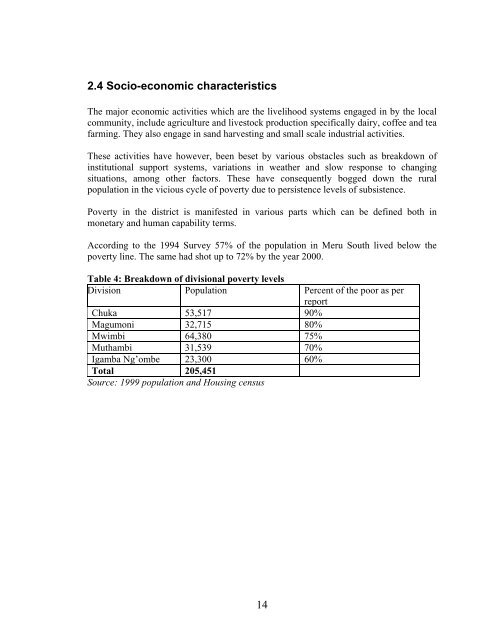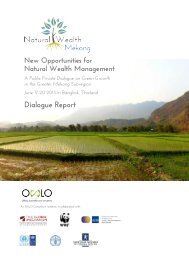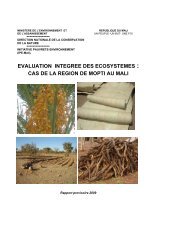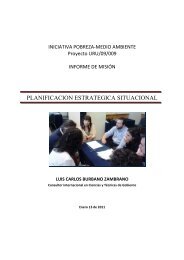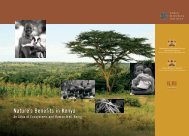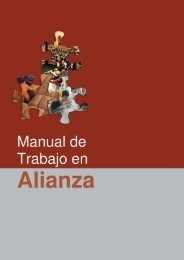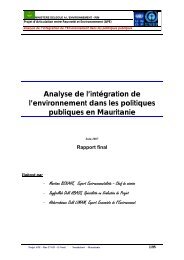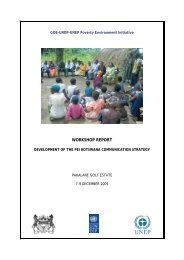Meru South District - UNDP-UNEP Poverty-Environment Initiative
Meru South District - UNDP-UNEP Poverty-Environment Initiative
Meru South District - UNDP-UNEP Poverty-Environment Initiative
Create successful ePaper yourself
Turn your PDF publications into a flip-book with our unique Google optimized e-Paper software.
2.4 Socio-economic characteristics<br />
The major economic activities which are the livelihood systems engaged in by the local<br />
community, include agriculture and livestock production specifically dairy, coffee and tea<br />
farming. They also engage in sand harvesting and small scale industrial activities.<br />
These activities have however, been beset by various obstacles such as breakdown of<br />
institutional support systems, variations in weather and slow response to changing<br />
situations, among other factors. These have consequently bogged down the rural<br />
population in the vicious cycle of poverty due to persistence levels of subsistence.<br />
<strong>Poverty</strong> in the district is manifested in various parts which can be defined both in<br />
monetary and human capability terms.<br />
According to the 1994 Survey 57% of the population in <strong>Meru</strong> <strong>South</strong> lived below the<br />
poverty line. The same had shot up to 72% by the year 2000.<br />
Table 4: Breakdown of divisional poverty levels<br />
Division Population Percent of the poor as per<br />
report<br />
Chuka 53,517 90%<br />
Magumoni 32,715 80%<br />
Mwimbi 64,380 75%<br />
Muthambi 31,539 70%<br />
Igamba Ng’ombe 23,300 60%<br />
Total 205,451<br />
Source: 1999 population and Housing census<br />
14


